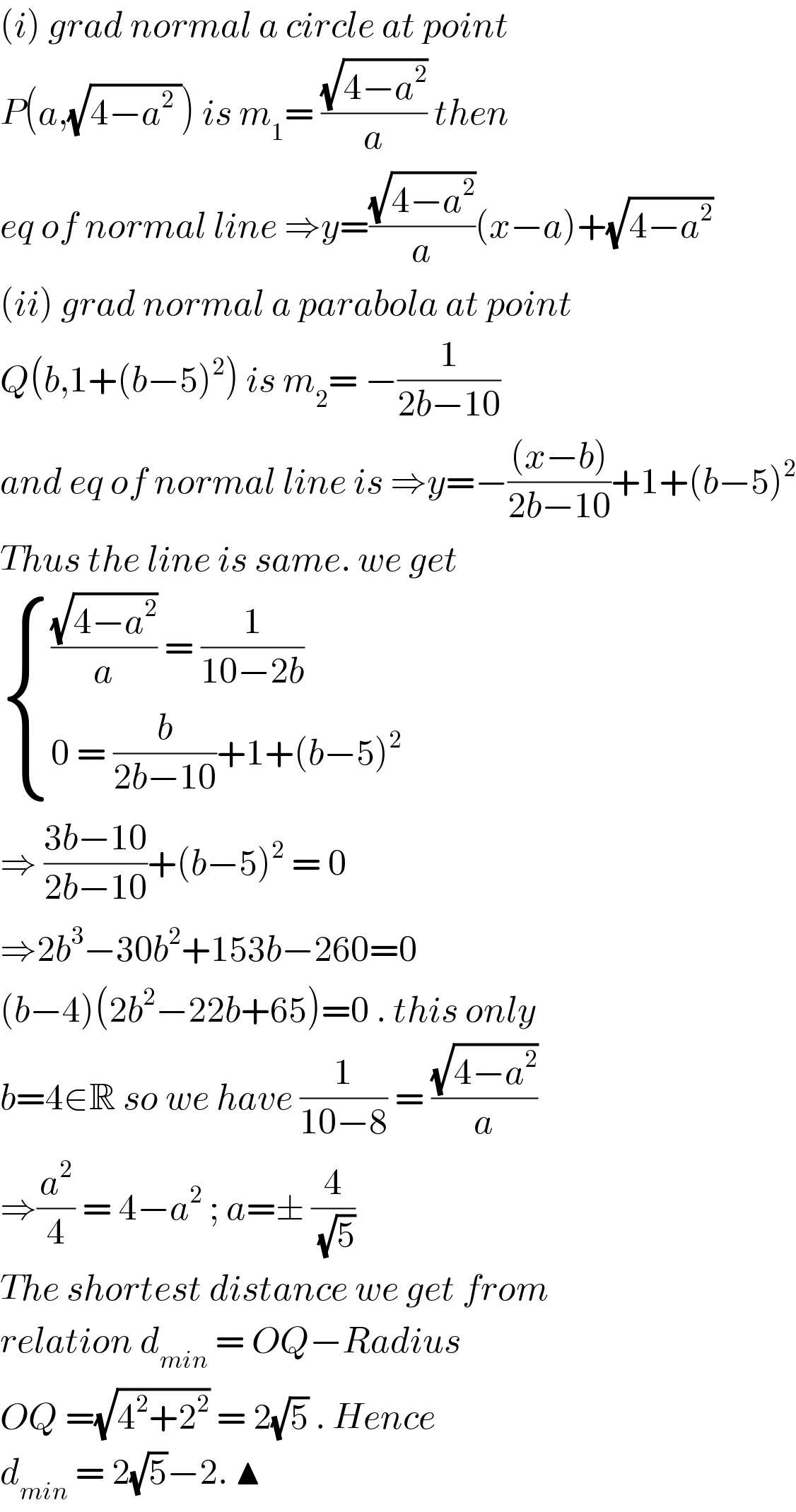
Question and Answers Forum
Question Number 123575 by bramlexs22 last updated on 26/Nov/20

Commented by liberty last updated on 26/Nov/20

Answered by MJS_new last updated on 26/Nov/20
![we need the point of the parabola with the shortest distance to the center of the circle. the center of the circle is ((0),(0) ) , its radius is 2 the points of the parabola are ((x),(((x−5)^2 +1)) ) ⇒ the square of the distance to ((0),(0) ) is (x)^2 +((x−5)^2 +1)^2 = =x^4 −20x^3 +153x^2 −520x+676 (d/dx)[x^4 −20x^3 +153x^2 −520x+676]=0 4x^3 −60x^2 +306x−520=0 ⇒ x=4 ⇒ distance is 2(√5) to the origin and 2(√5)−2 to the line of the circle answer 2(√5)−2](Q123579.png)
| ||
Question and Answers Forum | ||
Question Number 123575 by bramlexs22 last updated on 26/Nov/20 | ||
 | ||
Commented by liberty last updated on 26/Nov/20 | ||
 | ||
Answered by MJS_new last updated on 26/Nov/20 | ||
![we need the point of the parabola with the shortest distance to the center of the circle. the center of the circle is ((0),(0) ) , its radius is 2 the points of the parabola are ((x),(((x−5)^2 +1)) ) ⇒ the square of the distance to ((0),(0) ) is (x)^2 +((x−5)^2 +1)^2 = =x^4 −20x^3 +153x^2 −520x+676 (d/dx)[x^4 −20x^3 +153x^2 −520x+676]=0 4x^3 −60x^2 +306x−520=0 ⇒ x=4 ⇒ distance is 2(√5) to the origin and 2(√5)−2 to the line of the circle answer 2(√5)−2](Q123579.png) | ||
| ||